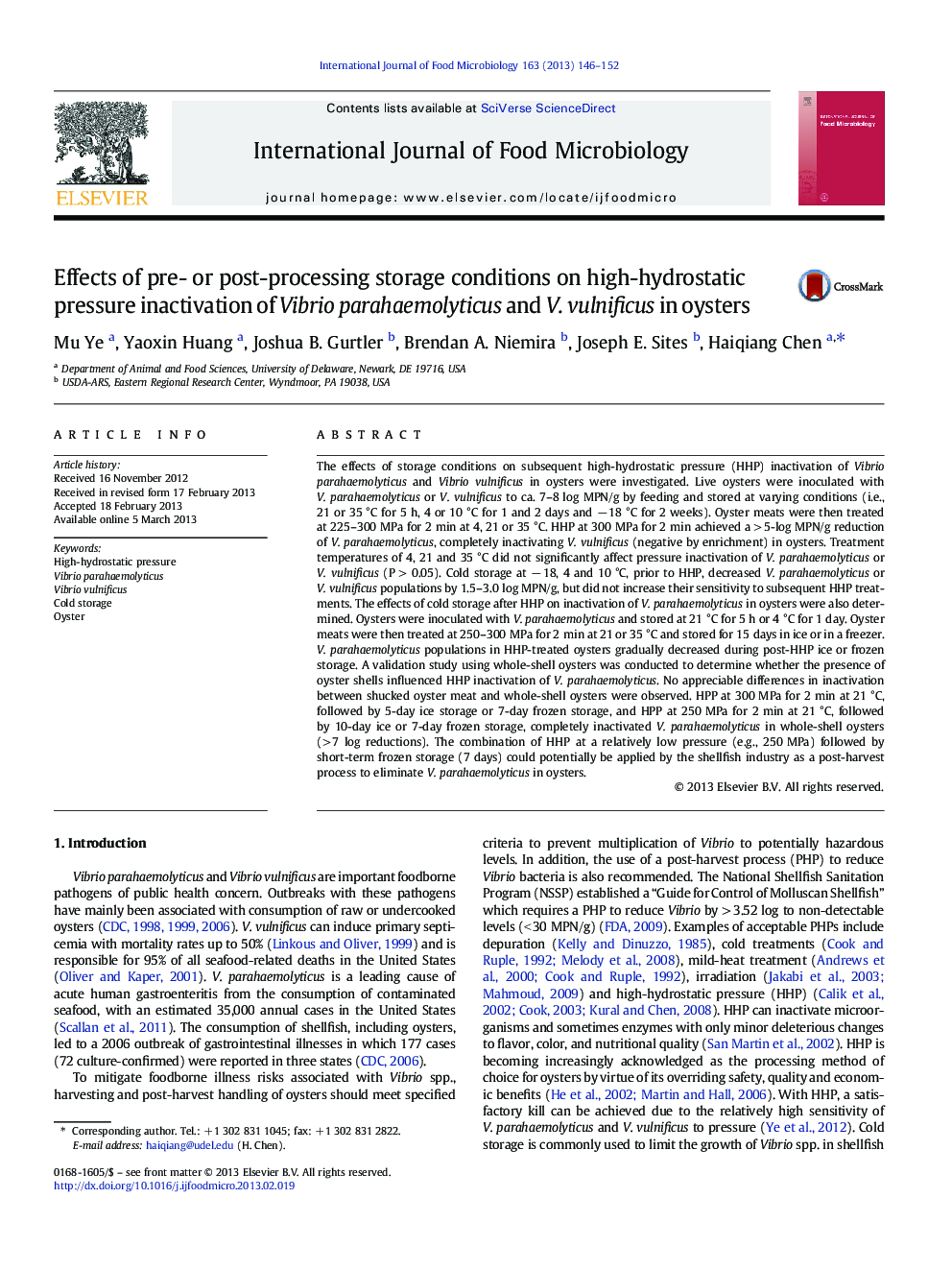| Article ID | Journal | Published Year | Pages | File Type |
|---|---|---|---|---|
| 4367161 | International Journal of Food Microbiology | 2013 | 7 Pages |
•V. parahaemolyticus and V. vulnificus were cold-sensitive.•Treatment temperatures did not significantly affect pressure inactivation of either pathogen in oysters.•Cold storage prior to HHP did not increase their sensitivity to subsequent HHP treatments.•V. parahaemolyticus in HHP-treated oysters gradually died off during post-HHP ice or frozen storage.
The effects of storage conditions on subsequent high-hydrostatic pressure (HHP) inactivation of Vibrio parahaemolyticus and Vibrio vulnificus in oysters were investigated. Live oysters were inoculated with V. parahaemolyticus or V. vulnificus to ca. 7–8 log MPN/g by feeding and stored at varying conditions (i.e., 21 or 35 °C for 5 h, 4 or 10 °C for 1 and 2 days and − 18 °C for 2 weeks). Oyster meats were then treated at 225–300 MPa for 2 min at 4, 21 or 35 °C. HHP at 300 MPa for 2 min achieved a > 5-log MPN/g reduction of V. parahaemolyticus, completely inactivating V. vulnificus (negative by enrichment) in oysters. Treatment temperatures of 4, 21 and 35 °C did not significantly affect pressure inactivation of V. parahaemolyticus or V. vulnificus (P > 0.05). Cold storage at − 18, 4 and 10 °C, prior to HHP, decreased V. parahaemolyticus or V. vulnificus populations by 1.5–3.0 log MPN/g, but did not increase their sensitivity to subsequent HHP treatments. The effects of cold storage after HHP on inactivation of V. parahaemolyticus in oysters were also determined. Oysters were inoculated with V. parahaemolyticus and stored at 21 °C for 5 h or 4 °C for 1 day. Oyster meats were then treated at 250–300 MPa for 2 min at 21 or 35 °C and stored for 15 days in ice or in a freezer. V. parahaemolyticus populations in HHP-treated oysters gradually decreased during post-HHP ice or frozen storage. A validation study using whole-shell oysters was conducted to determine whether the presence of oyster shells influenced HHP inactivation of V. parahaemolyticus. No appreciable differences in inactivation between shucked oyster meat and whole-shell oysters were observed. HPP at 300 MPa for 2 min at 21 °C, followed by 5-day ice storage or 7-day frozen storage, and HPP at 250 MPa for 2 min at 21 °C, followed by 10-day ice or 7-day frozen storage, completely inactivated V. parahaemolyticus in whole-shell oysters (> 7 log reductions). The combination of HHP at a relatively low pressure (e.g., 250 MPa) followed by short-term frozen storage (7 days) could potentially be applied by the shellfish industry as a post-harvest process to eliminate V. parahaemolyticus in oysters.
